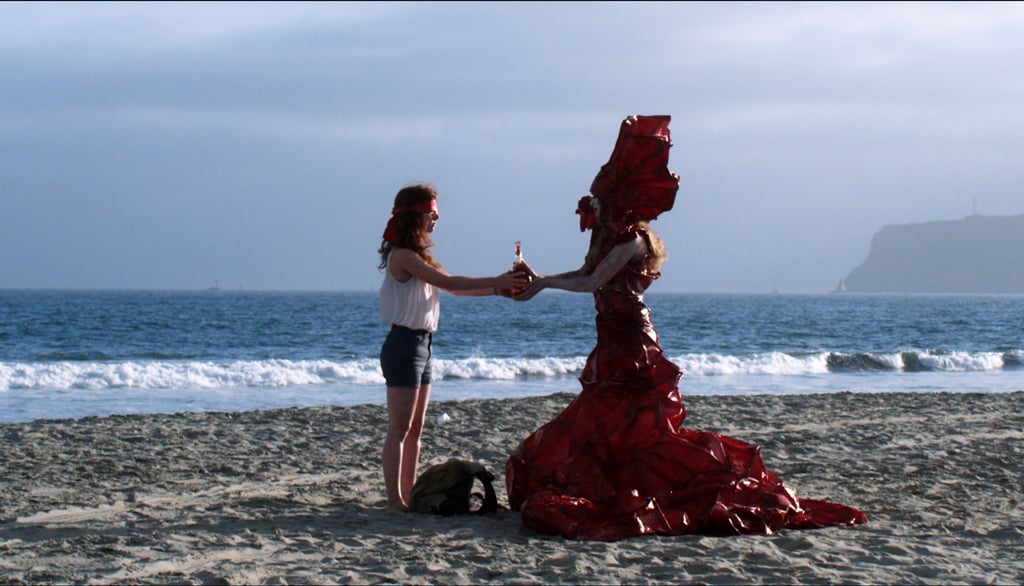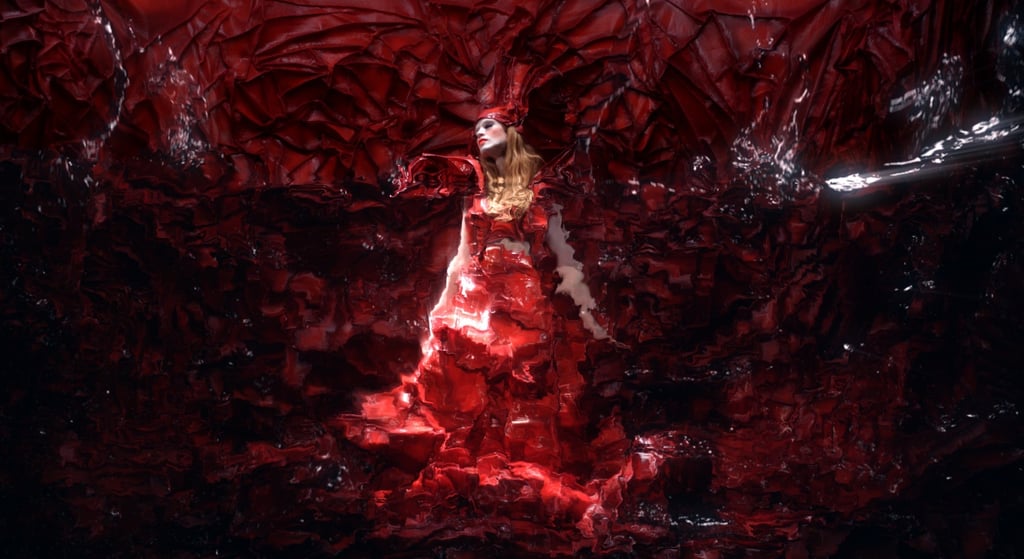A Conversation with Morissa Maltz
Jesy Odio
12/27/2013


On the surface Morrisa Maltz seems like a bubbly, California gal, but in reality she is a sophisticated and compelling video artist. Maltz, a Los Angeles-based filmmaker has an eye for the eerie and spooky. Her short films feature untidy, whimsical, female characters held within a single setting. Her moving portraits continued to be trapped within the confines a solitary scene until she decided to set them free into the world in her upcoming short film – Odyssea
Instead of a typical sit-down-question-answer interview I asked Maltz’s long-time friend, collaborator, and musician/songwriter, Carrick Moore Gerety, to get together to hold a more casual and personal conversation. On a chilly autumnal Thursday evening, the two met at Moore Gerety’s ranch in Los Angeles’ Glassell Park and chatted about Morrisa Maltz’s epic journey to Coronado for Odyssea.
In order to preserve the magic, intimacy, and authenticity of their conversation it was remotely recorded
Odyssea will be premiering at the Slamdance Film Festival in early January in Park City, Utah.
On Morrisa Maltz’s short film, Odyssea


Carrick Moore Gerety: We also just watched Morrisa’s latest short film, which is called Odyssea, correct? It’s not quite done, but she just submitted it to festivals. Or I guess it’s pretty much done; you’re working on the last —
Morissa Maltz: Just the credits – the credits have been an issue.
CMG: First of all, tell me what the name of your short film is about? What does the name signify?
MM: Odyssea? To me, it’s the girl-version of Odysseus, going back to… but people will probably not see it like that.
CMG: No, I see that – coming back home after a long journey.
MM: The journey is not exactly — it’s not as…epic as the Odyssey.
CMG: Right, she [the main character] just went to LA. She left Coronado, which is a little island next to San Diego. She went to LA for a while and went back to Coronado.
[Laughter]
CMG: The Odyssey!
MM: It’s a pretty minor journey, but it’s supposed to feel epic.
CMG: It’s really cool, I’m excited for people to see it.
MM: Me too!
CMG: So tell me… you’re definitely a California Girl. What it is about —
MM: Really?
CMG: I mean, I don’t know, in some ways.
MM: Yeah. No, I am.
CMG: What is it about Coronado that you think is so special? Why did you set this film there? Because that’s kind of the main subject of the piece: this place.
MM: Yeah, well I set it there ‘cause… I went to high school there… grew up… ish… there… actually, what gave me the idea was when I went to see a Gregory Crewdson lecture. Do you know who Gregory Crewdson is?
CMG: Sounds familiar. Remind me.
MM: He takes amazing photographs.
CMG: Are there very narrative? The gas station with the car with the hood open and it’s smoking?
MM: Yeah, and they’re gorgeous and each one feels like it’s a film of some kind. But I went to see a lecture and he was talking about how he gets inspiration for his photographs and where he shoots most of his photographs. It’s in this small town in Massachusetts where he used to vacation with his family when he was younger. So, he would just go there… drives there every once in a while and just drives around and thinks…
It’s just a place that’s held importance to him since he was a child, and so it’s natural that he would go back there to look for inspiration and to make his work there. My friend and I left that lecture and I was like, “Oh! that made so much sense.” Like Coronado has this weird part of me. I go back there and just look and drive there every now and then. And I think, “maybe I’ll find some answers.” Some kind of something that I’m looking for…
CMG: Do you think it’s the place or just your association?
MM: I think it’s the association with the place – because a place from your childhood. There is this feeling of going back to somewhere, but never being able to actually go back there. And I’m sure people have that even if your family has moved or whatever. The significance is that you keep going back to this place where you want to feel the feeling of “home.” But you don’t have that anymore; but you feel like every time you go there you’ll find — I’m not making sense.
CMG: I understand what you’re saying! To me — I think [Andy] Warhol — I mean, a lot of great artists have talked about nostalgia. I think Warhol was someone who said, I’m paraphrasing, but something along the lines of… things aren’t that amazing as they’re happening; it takes a little bit of time passing to imbue some experience you’ve had with something magical… or something wistful. Like this right now… it seems like “whatever:” we’re seating in my couch in my living room, and we’re just talking.
MM: Going back to a place to make work there or whatever… I feel like that created the magic that you’re looking for.
CMG: Yeah, Coronado. Proust had… I think it’s called Cambray, the name of the town where he grew up. He had like basically his whole like inspiration came from just writing about this place. Remembering it, you know, and this is your version; Coronado is like your version of that place [Cambray].
MM: But I think in general… you hear a lot of people pulling a lot of their inspiration from –childhood has a huge — I think that’s the biggest impact that I’ve heard across the board of people.
CMG: Well, yeah I like the movie [Odyssea] a lot… It’s very original — I think it’s original. Because I know you, and I know your previous work, so I’m looking through that lens a little bit. One thing it definitely reminds me of is David Lynch. It has that very stylized, spooky vibe, which like —
MM: — that’s not a bad thing.
CMG: Yeah, no it’s cool. I think he’s great. I mean was that a conscious thing? Are you into him [Lynch]?
MM: It wasn’t a conscious thing… I want to make a movie like David Lynch. Now I’m going to do that, but I think there’s a few other people that I have watched over and over again.
CMG: Right – like you like spooky stuff.
MM: Right – like Tim Burton and David Lynch.
CMG: So then the other things that are interesting to me, and probably will be interesting to people that have seen or see your stuff. You’re in the progress of moving from totally abstract video art to more narrative filmmaking…. I mean one thing is like your earlier stuff: it’s kind of like moving painting. You know what I mean? It’s like an abstract thing…. We can talk about sounds for a minute…. For the most part, a lot of your pieces are on one set and it’s a really cool-looking set. And you just film yourself in this environment and you kind of dress up as these creatures. For this film, you’ve taken one of those creatures. You built the same kind of costume you often do… and put her in the real world and there’s real people she’s interacting with. You use the set in the end but in general, it’s like one of these creatures is taken out and is moving through time and space in a way that you weren’t in your other ones. And also, you cast an actress, Amy Ferguson, who people might have seen in Paul Thomas Anderson’s movie, The Master, she was the girl in the department store in the beginning. So, putting an actual actress in this creature role that you often play yourself… why?
MM: I was just thinking about that as you were talking. I don’t really know why, but I think it’s sort of a natural progression… Odyssea stemmed first from building a set and a costume. And then asking: what’s going to happen with this?
It came out of an image first and then the story was built upon that. But I think that more of a movement into narrative filmmaking with this weird sort of world is just that… I think film also has the ability to tell really emotionally relevant and personal narratives. It’s an amazing way to communicate and I think that, making art, or any sort of creative endeavor, you are trying to communicate something. And so I think…
CMG: Maybe you feel like you’ve communicated what you could with video art?
MM: I mean… it just has more potential to tell more. For me… I think that I was getting a little bored of the images [I used in my video work], just imagery and sound. And I wanted to explore different ways.
CMG: Expand what you’re able to tell and talk about.
MM: The video art I was doing was also very centered around building sets, making costumes, filming it myself. I also wanted to explore different ways of making things; like having a film crew; directing something with a team is a very different thing from being in the studio and filming something yourself.
